[Click on BLUE links for sources and more information]
On the Paseo de la Reforma, that grand avenue simulating the entrance to an imperial Mexico City that of course no longer exists, there’s a quadrangle of tiny absences, small plazas, where once there were things that are now only gaps. As if the perfect, majestic smile of Madame de la Reforma now lacked a number of teeth. Only God and perhaps Salvador Novo—modernist chronicler of the city—know what was there before the appearance of those empty spaces… A group of architects from the National University (UNAM), headed by Carlos González Lobo, have christened these spaces “relingos.”
Valeria Luiselli, Sidewalks
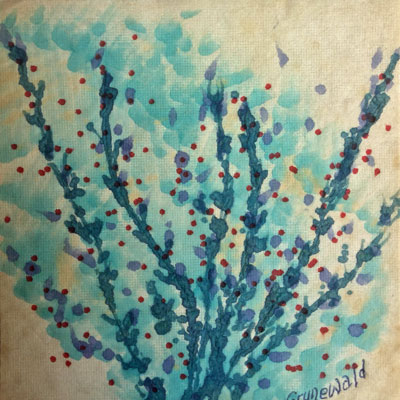
Sea Gull Cellar Bar Napkin Art, Estelle Grunewald artist
A friend (S.H.) once told me a story about the time she was participating in a live radio performance of The Shadow. If you know the play, you know that at crucial points where the characters find themselves unsure about the strange events surrounding them, they ask each other “Who knows?” At that point a mysterious voice answers from the darkness, “the shadow knows.” The simplicity of the statement was eerily effective. One day just as the live show was about to air, the actors realized the man who had the The Shadow’s line was not present. As they scurried around to find someone who could speak this short but all important line, the janitor, a black man with a deep voice who had listened to every performance of the play, stepped forward and said he would be happy to play the part. Everyone agreed it was the perfect solution.
When it was time for the play to air, the actors assumed their places around the microphone. It was not long before the moment came for the janitor to make his debut. “Who knows?” asked one of the actors when the first anomaly appeared in the action. The black janitor stepped forward and with perfect cadence said: “The shadow DO.”
At the time everyone was horrified but afterward they all had a good laugh. That’s the thing about empty spaces. They are free to be filled by anything.
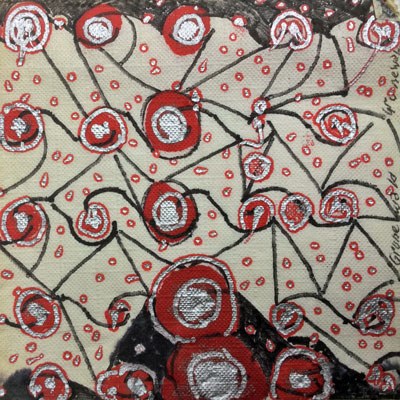
Sea Gull Cellar Bar Napkin Art, Estelle Grunewald artist
According to Aristotle, nature abhors a vacuum (“horror vacui”). Modern science, as far as it goes, agrees. Still, there is something about empty spaces that beckons. Valeria Luiselli beautifully explains why this is so in her short book Sidewalks. Albert Camus wrote a story, Jonas, or the Artist at Work, where he shows how creativity arises from solitude, silence, shadows and what can happen when these empty spaces are crowded out.
There is a deep need to clear the mind, impossible as it may be. I’ve never been good at meditation. The mind is stubborn, persistent, demanding. Even in dreams there is work to be done, wheat separated from chaff. The mind struggles to focus, to be productive. Idle hands are the devil’s playground.
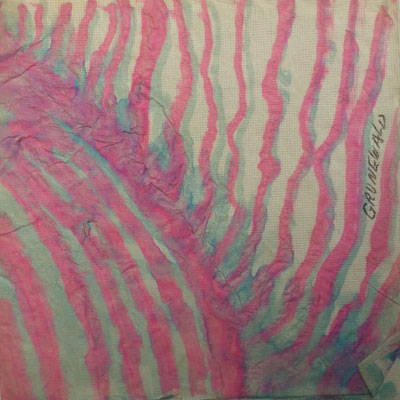
Sea Gull Cellar Bar Napkin Art, Estelle Grunewald artist
Spacing out, the wandering mind, the blank stare … what are these about? I don’t know but I do know these fragile moments are important. Years ago when my oldest son was young and we were walking through town he asked me why I served on the local architectural review board. I stopped and pointed to an empty space between two buildings where there was a vista to the sea. “That’s why,” I told him. He understood.
It seems odd to me how economists divide the world into developed, less developed and underdeveloped with the implication that development equals progress. It’s the underdeveloped and less developed places that excite not only me but those large numbers of urban dwellers who find it necessary from time to time to escape the stress and noise. The empty spaces are necessary despite Marx’s often misunderstood comment about “the idiocy of rural life.” God forbid we should find ourselves unproductive, alone, inhabiting wasted space.
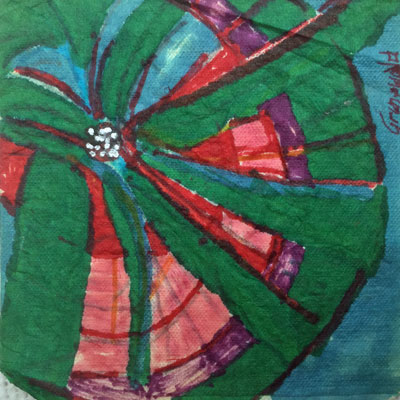
Sea Gull Cellar Bar Napkin Art, Estelle Grunewald artist
The five senses—sight, smell, hearing, taste, touch. The senses bring the world inside us. Thinking is what we do with the information. The physicist Richard Feynman wrote about the pleasure of finding things out. Questions, answers. Data, processing. The natural progression.
I sometimes think a human being consists of two things, memory and imagination. Memory includes more than meets the eye. DNA, for example. Or, the tracks laid down in the mind when the synapses pop across empty space. Imagination is what you see and how you feel in the “relingos.”
Honor and cherish the empty spaces. There is an almost irresistible urge to fill them.
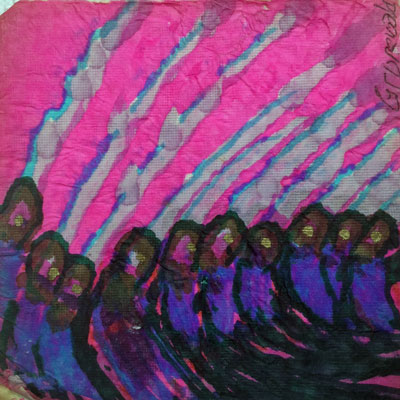
Sea Gull Cellar Bar Napkin Art, Estelle Grunewald artist
And then I have a secret. Did you know what will happen if you eliminate the empty spaces from the universe, eliminate the empty spaces in all the atoms? The universe will become as big as my fist. Similarly, we have a lot of empty spaces in our lives. I call them interstices. Say you are coming over to my place. You are in an elevator and while you are coming up, I am waiting for you. This is an interstice, an empty space. I work in empty spaces. While waiting for your elevator to come up from the first to the third floor, I have already written an article!
In this world of apps and devices, time, always limited, always short, has become even shorter. Attention spans shrink. Boredom sets in quickly if we sense we are not busy enough. Even with all the demands of modern life there are, thankfully, empty spaces. Consider the little break at the coffee shop, the moments between innings at a baseball game, the inevitable wait at the doctor or dentist office, the several minutes before one can fall asleep at night, the time wasted reading Presidential tweets or speculating about which direction stock prices will take over the next few hours, the unexpected, irregular times when the power goes out.
We need the empty spaces in our lives, in the world, in a city or a town. Pay attention when they come. Beware progress.
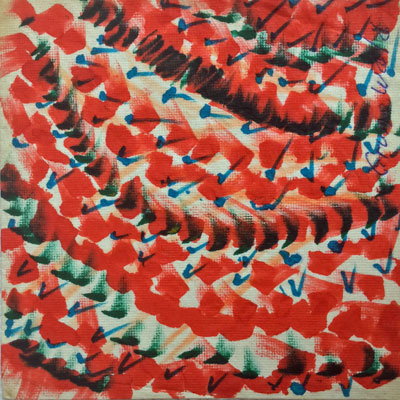
Sea Gull Cellar Bar Napkin Art, Estelle Grunewald artist
I look around sometimes at the paraphernalia of our living—sandwich bags, typewriters, little wheels off things—and marvel at the complexities of civilization with which we surround ourselves; would we be pleased, I wonder, at a wholesale elimination of these things, so that we were reduced only to necessities (coffeepot, typewriters, the essential little wheels off things) and then—this happening usually in the springtime—I begin throwing things away, and it turns out that although we can live agreeably without the little wheels off things, new little wheels turn up almost immediately. This is, I suspect, progress. They can make new little wheels, if not faster than they can fall off things, at least faster than I can throw them away.
Shirley Jackson, Life Among the Savages
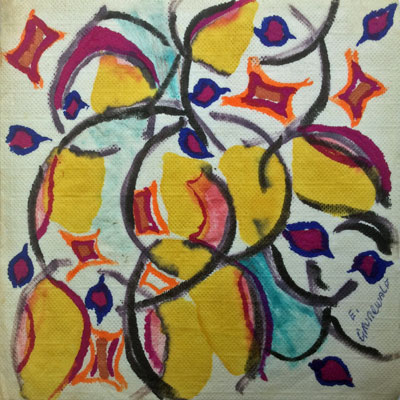
Sea Gull Cellar Bar Napkin Art, Estelle Grunewald artist
Returning to Valeria Luiselli’s fine book Sidewalks:
“A writer is a person who rubs out. . . . Cutting, lopping: finding a form that was already there.”
But words are not plants and, in any case, gardens are for the poets with orderly, landscaped hearts. Prose is for those with a builder’s spirit.
Writing: drilling walls, breaking windows, blowing up buildings. Deep excavations to find—to find what? To find nothing.
A writer is a person who distributes silences and empty spaces.
Writing: making relingos.
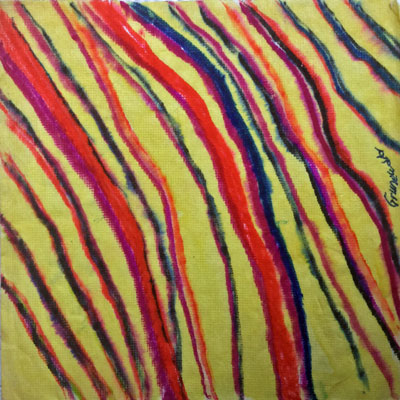
Sea Gull Cellar Bar Napkin Art, Estelle Grunewald artist
I love that word relingo. If it’s true that writers make relingos, what do readers do with this empty space? Anything the reader wants. This is the ultimate freedom. This is the power that comes from empty spaces.
ENDNOTE
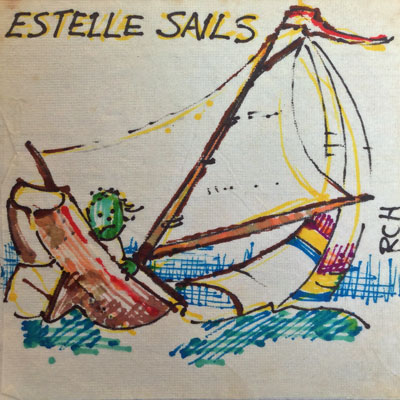
Sea Gull Cellar Bar Napkin Art, Roy Hoggard artist (Estelle Sails)
The napkin art produced in the Sea Gull Cellar Bar in the 1970s and 1980s makes optimum use of empty space. It could be called The Art of Empty Space. Most of the napkins displayed in this post are by my friend and artist Estelle Grunewald (1910-1994). Another artist and friend, Hilda Pertha, had this to say about Estelle: Estelle Grunewald has had long experience in showing her own and other artists’ work. Before moving (to Mendocino) in 1968, she ran a business for many years in Palo Alto called “Art to Industry.” I think she was somewhat a pioneer in that field, which now has a number of agents and dealers catering to the corporate world with rentals and sales.
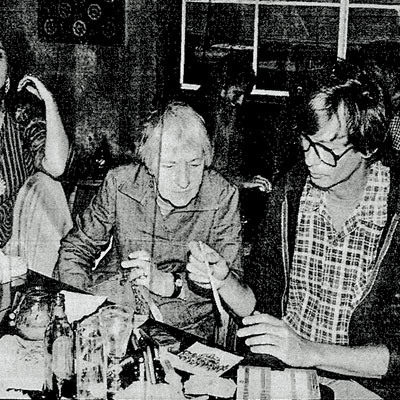
Estelle Grunewald and James Maxwell in the Sea Gull Cellar Bar making napkin art
(Before her death) Estelle exhibited in Palo Alto at the Gallery House, as well as at the Mendocino Art Center, Made in Mendocino Gallery in Hopland, and in her home near the village by appointment. Her work has been mainly large abstractions with a feeling of landscape. For 46 years, she has gone her own way, composing as she paints, bringing out colors and shapes that develop as themes from nature, but not in a literal sense. Her recent assay into the small format has been very successful, including etchings, woodcuts, monoprints and colored felt pen drawings. Her studio is open by appointment only.
Gallery House is a Palo Alto art cooperative founded in 1958 by Edith Sommer and Estelle Grunewald.
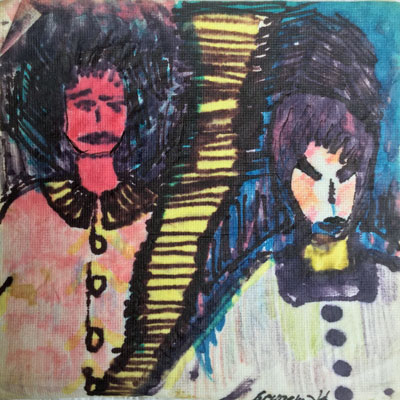
Sea Gull Cellar Bar Napkin Art, Estelle Grunewald artist

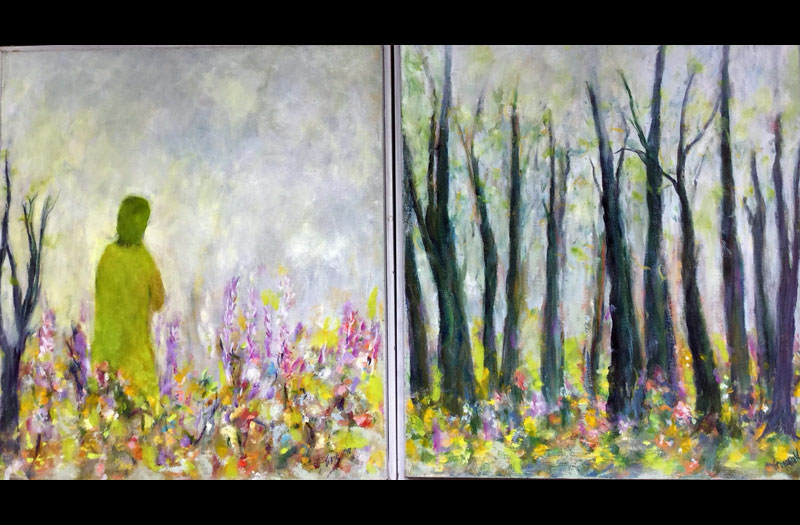
Estelle could be a little irritating, she was kind of persona non grata around the Art Center, she had done some favors for me as a new arrival in Mendocino, I started dragging her everywhere, she fit in to our general craziness, She could miss the point of a joke, I still miss her. When she was getting sick, she opened a drawer and handed me a fork ‘when you have dinner, remember me’
Roy, that hit’s the spot! Exactly as I remember her.
I’m speechless! To see Estelle’s napkin art grouped this way—it was an intense understanding experience. . . as well, an honoring of the friendships and collaborations expressed at your tables. . . . You should be so proud.
Thank you Beth. I am very happy that you take the time to read my blog. And Estelle, she was one of a kind.
I called her “Cookie” – she could always make me laugh. I run into friends who show me Estelle’s work hanging in a bedroom, a hall. That makes me recall her laughter. So glad to have known her. A real friend and when at a potluck at her house she surprised me, the only elderly woman who really “goosed” me to the point of exploration. When I turned around to see Estelle, she said with a grin, “I always wanted to do that.”
Estelle befriended me in the best way and found a way for me to move to Mendocino, live and work there in 1973. We became good friends, and I never minded her eccentric ways, as she was so kind to me and so lively. I ate dinner with her and Dick a few times a week for two few years at their home. Every interaction I had with Estelle was complicated but interesting. I miss her and Dick and still enjoy remembering them in their house.
My parents, Stan and Mickie Croner were good friends with Estelle and Dick in Mendocino, she was hilarious and I think the only person who was ever able to make my father laugh at his foibles. Damn, she was terrific and they spent a lot of time with Estelle, Dick, Marian Rice and her husband, a sculptor…Is that house still in existence? I’m heading up to Mendocino for the film festival, and would so love to drive by it again. I believe their son, at the time, worked on a fishing boat? What a remarkable time, what amazing people!